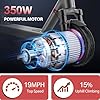Cienfy 3D Hip Protection Eva Butt Pads Protective Padded Shorts Crash Pad Impact Gear for Skiing Skating Snowboarding Skateboarding
$29.99 (as of January 4, 2026 16:16 GMT +00:00 - More infoProduct prices and availability are accurate as of the date/time indicated and are subject to change. Any price and availability information displayed on [relevant Amazon Site(s), as applicable] at the time of purchase will apply to the purchase of this product.)In sustainable energy solutions, bicycle generators seem as a compelling innovation. These ingenious devices harness human pedal power to generate electricity, embodying a harmonious blend of fitness and eco-friendliness. Individuals can transform their kinetic energy into electrical power by pedaling a bicycle attached to a generator, effectively contributing to a cleaner environment.
The Importance of such sustainable energy solutions cannot be overstated in today’s world. As concerns over climate change and depleting fossil fuels intensify, the need for alternative energy sources gains paramount importance.
Bicycle generators provide a practical and reachable approach, showcasing the potential for decentralized energy production. This innovation not only decreases carbon footprints but also promotes a healthier lifestyle. It’s a concrete step towards a greener future, where individuals actively engage in generating clean energy while championing a more sustainable way of life.
Understanding Bicycle Generators and Their Benefits:

A bicycle generator is a remarkable innovation converting human kinetic energy into electricity. It works on a simple principle: mechanical energy is generated as the rider pedals the bicycle, which is then transformed into electrical energy.
The components engaged in this conversion process include a bicycle with a modified rear wheel, a generator unit, and a mechanism for energy transfer. As the rider pedals, the rear wheel turns a generator, which contains coils of wire and magnets.
This motion induces a magnetic field, leading to the creation of alternating current (AC) electricity. A rectifier converts AC to direct current (DC) to make the electricity usable, ensuring a steady power output.
Additionally, a voltage regulator keeps a steady flow of electricity to prevent overloading the connected devices. This elegant synergy of mechanical and electrical components showcases a harmonious blend of human effort and technological innovation.
Bicycle generators exemplify the inventive methods we can harness everyday activities for sustainable energy production, offering a glimpse into a future where green energy solutions are seamlessly integrated into our lives.
Environmental Advantages:

Bicycle generators provide a remarkable solution to pressing environmental concerns, presenting many benefits for a eco-friendly planet. By using human power to generate electricity, these generators significantly reduces our carbon footprint and promote cleaner energy sources.
One of the most vital environmental advantages lies in their ability to reduce reliance on fossil fuels. Traditional energy production heavily depends on non-renewable resources, releasing harmful greenhouse gases into the atmosphere. But with bicycle generators, we can make electricity without letting out any bad stuff, which helps stop air pollution and the bad things it does to our climate.
Furthermore, these generators encourage a shift towards sustainable existence by fostering a deeper connection to energy consumption. As individuals pedal to create power, they gain a firsthand understanding of the effort required to produce electricity, leading to conscious energy use.
Incorporating bicycle generators into daily routines is a tangible way for promoting physical activity, leading to healthier ways. This dual impact on personal well-being and environmental preservation exemplifies the trans-formative potential of innovative technologies. Bicycle generators are a beacon of hope, demonstrating that simple actions can create significant positive shifts for our planet’s future
Cost-Efficiency and Independence:
Bicycle generators offer not only environmental advantages but also long-term cost savings. Once established, they necessitate minimal upkeep and no fuel expenses, diminishing electricity costs over time. Additionally, their potential radiates in remote or off-grid areas.
By utilizing human power, they provide a reliable energy source independent of conventional grids, ensuring energy access where infrastructure is restricted. This energy self-sufficiency empowers communities, making bicycle generators a promising solution for a sustainable, cost-effective, and independent energy future.
The Energy Conversion Process:
The shift of kinetic energy into electric energy, the core of bike generators, follows intricate scientific rules. The bike’s kinetic energy is changed to the back wheel as the rider pedals. This spinning movement propels a generator unit, made up of loops and magnets.
As per Faraday’s law of electromagnetic induction, the moving magnetic field makes an electric current within the loops. This created alternating current (AC) is then turned into direct current (DC) via a rectifier, making it good for various devices.
The change process is a mix of forces and fields where human work triggers energy creation. This smart blend of mechanical and electromagnetic events shows the brightness of bike generators, proving the interplay of physics and engineering to catch motion’s power and light up the road to eco-friendly energy solutions.
Generator Components and Mechanics:
A bike generator’s charm resides in its detailed parts, smoothly operating in harmony for effective energy transformation. The wheel, an essential piece, saves rotating energy, keeping motion during pedaling breaks.
The alternator, a hub of imagination, houses loops and magnets. As the wheel turns, it shifts the alternator, producing a magnetic field and creating electricity. Cables then transport this electricity, ready for use.
The balance between these pieces and the mechanical skill of the flywheel’s ongoing movement display the brilliance behind the gadget. It’s a blend of engineering that captures and boosts human work into usable power. With each pedal push, these parts join to encourage a future where motion and mechanics sway to the melody of sustainability, making electricity in the most lively and clever methods.
Power Output and Efficiency Factors:
The energy produced by bike generators relies on a delicate mix of factors. Pedal speed and resistance mold the generated energy like a conductor and an orchestra. Faster pedal speeds lead to more generator rotations, creating stronger currents. Changing resistance levels, similar to tuning an instrument, also affects power production.
Perfecting the pedal technique is an art in itself, ensuring the highest efficiency. A smooth, steady rhythm maximizes energy transfer while avoiding sudden movements and keeping a constant power flow. Spreading effort evenly across the pedal motion reduces strain, allowing continuous generation. Similar to skilled musicians, cyclists can enhance their output by coordinating movements harmoniously.
By grasping and mastering these dynamics, people can tap into the real capability of bike generators. Just as musicians improve their skills, cyclists can enhance their pedal technique, creating clean, green energy melodies and leading the way toward a sustainable future.
DIY Bicycle Generators: Building Your Own Green Energy Source:

Getting Started with DIY Projects:
Embark on an enchanting journey by exploring the idea of creating your bike generator right at home. Picture the excitement of turning your pedaling skill into electricity! Making one yourself isn’t just a task; it’s a voyage in creativity and empowerment.
Hands-on education takes the main spotlight, changing bookish knowledge into real outcomes. While you put together the parts and see the generator come to life, you’ll get insights into the complex mix of mechanics and electromagnetism. Beyond understanding, personalization becomes your canvas; you can adjust and experiment to shape the generator’s performance to your wishes.
This effort nurtures a stronger link to eco-friendly energy, reminding us that innovation isn’t limited to labs and factories. Creating a bike generator at home is a tribute to inventiveness and a sign of self-reliance. The advantages go far beyond the electricity produced – it’s about the satisfaction in crafting, the understanding gained, and the flicker of empowerment that brightens your sustainable journey.
Materials and Tools Needed:
Constructing a primary bicycle generator is an exciting endeavor that requires a handful of materials and tools readily available to enthusiasts. To begin, gather a bicycle (preferably a spare), an alternator, a flywheel, a belt, and a voltage regulator. You’ll also need wires, a rectifier, and a multimeter for testing.
Sourcing these components can be an adventure in itself. Visit local bike shops, salvage yards, or online marketplaces for affordable options. Be sure to choose an alternator compatible with your bicycle’s rear wheel size for optimal performance.
Safety is paramount during construction. Protect yourself with gloves and goggles, and work in a well-ventilated area. Ensure the bike is stable and securely positioned before attaching components. Familiarize yourself with the wiring diagram and follow instructions carefully to avoid electrical hazards.
By carefully selecting components, sourcing wisely, and prioritizing safety, you’re on your way to crafting a functional bicycle generator – a testament to your DIY spirit and commitment to sustainable energy exploration.
Step-by-Step Assembly Guide:
Embark on a step-by-step journey to create your bicycle generator, transforming pedal power into electricity.
Step 1: Mounting the Bike
Secure the bicycle on a stable stand, ensuring it’s level and well-balanced.
Step 2: Preparing the Rear Wheel
Remove the rear wheel and attach the flywheel to the hub. Secure it tightly using appropriate tools.
Step 3: Installing the Alternator
Fix the alternator onto the bike’s frame, ensuring it aligns with the flywheel. Connect the belt between the flywheel and the alternator pulley.
Step 4: Wiring and Components
Connect the alternator to the rectifier using wires, following a wiring diagram. Attach the voltage regulator to regulate the electricity output.
Step 5: Testing and Adjustment
Before the operation, carefully inspect all connections. Adjust the belt tension if necessary. Pedal the bike to test electricity generation using a multimeter.

Images or diagrams accompany each step, providing visual clarity to aid your construction process. You’re crafting a unique energy solution with precision and creativity, merging mechanical ingenuity and sustainable innovation.
Applications and Versatility of Bicycle Generators:

Off-Grid Living and Emergency Power:
Bike generators emerge as reliable companions in blackouts or off-grid situations, offering electricity lifelines when traditional sources weaken. Pedal power turns into a ray of hope when the grid goes dark, ensuring necessary devices stay working.
In crises, these generators can power essential devices like phones, radios, and medical tools, connecting the gap between isolation and connectivity. With every pedal, electricity streams, reigniting communication and aiding access to vital information.
Furthermore, the emotional comfort these generators provide during emergencies is priceless. They give individuals a concrete sense of control and contribution. As the world grapples with growing uncertainties, bike generators stand tall as symbols of resilience, lighting up the way to self-sufficiency and community support.
In a blackout’s shadow, they shine as beacons of light, reminding us that our collective efforts can illuminate a brighter tomorrow even amidst darkness.
Fitness and Health Benefits:
Diving into the realm of bike generators is more than just producing energy – it’s an opportunity to embrace physical activity and nurture overall well-being. By pedaling to make electricity, you’re not only fueling devices but also fueling your journey to better fitness.
The interwoven relationship between energy creation and exercise is remarkable. With each pedal, you generate electricity, activate major muscle groups, enhance cardiovascular health, and improve endurance. This two-fold approach combines sustainability and fitness, merging the green and wellness movements.
The attraction lies in the blend of effectiveness and motivation. The more you pedal, the more energy you generate, creating a sense of achievement that powers your workout routine. This dynamic fusion turns a routine task into an invigorating endeavor, magnifying your dedication to energy efficiency and personal vitality.
In a world where technology often keeps us sedentary, bicycle generators present a refreshing paradox – they keep us moving while keeping the lights on.
Educational and Community Outreach:
Bicycle generators serve as dynamic educational tools, brightening the captivating realm of renewable energy ideas. Schools and communities have a unique opportunity to harness their potential, nurturing a deeper understanding of sustainability while instilling a sense of active engagement.
In educational environments, bicycle generators become living laboratories, where students witness firsthand the transformation of physical effort into electrical energy. Ideas like kinetic energy, electromagnetic induction, and energy preservation come to life, sparking curiosity and critical thinking. Through hands-on involvement, students grasp the importance of green energy sources, fostering a future generation of environmentally aware thinkers.
Communities can smoothly integrate bicycle generators into sustainability programs, creating a powerful link between energy production and daily life. Schools might arrange energy-generating challenges, inspiring friendly contests while generating power for practical use. Farmer’s markets, fairs, and community events can highlight bicycle-powered charging stations, showcasing renewable energy’s practical uses.
Incorporating bicycle generators enriches curricula and nurtures a culture of environmental care. As the pedals turn, knowledge and inspiration flow, paving a route toward a greener, more sustainable future driven by informed minds and empowered actions.
Comparing Bicycle Generators with Other Renewable Energy Sources:

Bicycle Generators vs. Solar Panels:
Bicycle generators and solar panels provide distinct paths for tapping into renewable energy, each with benefits and limitations.
Bicycle generators shine in their mobility and accessibility. They need minimal initial investment and can be easily installed anywhere, making them perfect for urgent energy requirements, particularly in emergencies or off-grid situations. They also offer a special chance for physical activity while producing power. However, their output is directly linked to human effort, making them less effective for consistent high-energy needs.
On the other hand, solar panels excel in offering a steady and dependable energy source. They need sunlight instead of physical exertion, enabling continuous power production. Solar panels are suitable for long-term energy solutions and can even channel surplus energy back into the grid.
Still, solar panels demand a higher initial investment and rely on sunlight availability, which might pose challenges in specific areas or during overcast days.
The decision between bicycle generators and solar panels depends on the situation. Bicycle generators are useful when mobility, immediate power, and engagement are important, like in outdoor events or educational settings.
Solar panels are perfect for households and communities looking for continuous, grid-independent power, especially in regions with abundant sunlight. Both approaches contribute to a sustainable future, offering adaptable solutions to varied energy requirements.
Bicycle Generators vs. Wind Turbines:
Bicycle Generators:
Bicycle generators are a fascinating example of renewable energy innovation. Powered by human effort, they offer a unique method of generating energy.
Advantages:
Bicycle generators are impressively mobile, adapting to various environments. They can be quickly installed indoors or outdoors, providing flexibility for urgent power requirements. On the other hand, wind turbines require substantial space and are frequently restricted to particular areas.
Pedaling a bicycle generator is not just about producing electricity; it also encourages physical activity. This dual-purpose functionality promotes a healthier lifestyle while generating energy.
Bicycle generators offer instant power, making them vital during emergencies, community events, or educational initiatives. They can be easily assembled, providing a practical solution when traditional power sources falter.
Limitations:
- Output Limitation:
The energy output of bicycle generators is constrained by human effort. They may need more than high-energy demands or a sustained power supply.
- Continuous Effort:
To maintain energy generation, consistent pedaling is essential. This can be tiring for longer periods, limiting their practicality for longer use.
Wind Turbines:
Wind turbines harness wind’s kinetic energy, serving as stalwarts of renewable energy production.
Advantages:
Wind turbines generate substantial electricity, especially in areas with consistent wind patterns. They contribute significantly to grid power and are essential for large-scale energy projects.
Wind energy is inherently sustainable, utilizing a renewable resource to generate power without depleting finite resources.
Wind turbines operate autonomously, requiring minimal human intervention once installed.
Limitations:
- Space and Location:
Wind turbines necessitate substantial space, making them impractical in densely populated or urban areas.
- Initial Investment:
Wind turbines’ setup costs are higher than bicycle generators, which may deter small-scale or individual adoption.
- Environmental Impact:
Large wind farms can have visual and ecological impacts on landscapes, requiring careful consideration during installation.
Bicycle generators excel in portability, accessibility, and immediate utility, while wind turbines offer substantial energy yield and sustainable power generation. The choice between the two depends on factors like energy demand, location, and desired level of engagement.
Conclusion:
In the exciting voyage of energy creation, bike generators shine as symbols of creativity and empowerment. While we pedal toward a more eco-friendly future, we generate electricity and establish a stronger link between sustainability and daily behaviors.
The significance of eco-friendly energy solutions is clearer than ever, given the urgent requirement to lessen our carbon impact and embrace cleaner options. Bike generators serve as evidence of the potential of inventiveness and teamwork. They show us that by utilizing human energy, we can illuminate our devices and the way to a greener planet.
In an era of ever-evolving technology, bicycle generators provide a refreshing reminder that simplicity can yield a profound impact. They exemplify how each person can contribute to change, underscoring that the journey to a sustainable future begins with a single pedal stroke, transforming both our physical world and collective mindset.

I’m the founder of HoverboardsGuide.com, a comprehensive website dedicated to electric scooters and hoverboards. With a deep-rooted passion for electric gadgets, I’ve accumulated extensive experience in this field. I aim to assist users in selecting the best gadgets and providing reliable guidance.
I’ve tested and reviewed numerous models, gaining in-depth knowledge about their features, performance, and overall quality. Feel free to reach out to me with any queries, as I’m dedicated to addressing your concerns promptly. Join me on this exciting journey of exploring the world of electric rides and making informed decisions












